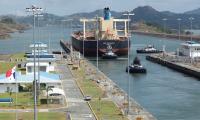Very few people outside the economics profession realize that fiscal (government revenue and expenditure) and current accounts (inflows and outflows of foreign exchange) are closely interlinked.
A current account is an accounting identity which shows the difference between a country’s national savings and domestic investments. China is a current account surplus country because its national savings are higher than its investment needs and is therefore a capital exporting nation that is financing the current account deficit of the US.
Pakistan, except for three years – 2003, 2004 and2005 – has been a current account deficit country. Since significant foreign direct investment is not flowing in (except in the years 2007 and 2008), it has been relying mainly on foreign savings in the form of external borrowings to fill in this gap between national savings and investment –that is: a current account deficit.
Let us then examine the components of national savings. There are 4 ways in which savings take place. Three components – public savings, household savings and corporate savings – form domestic savings. The fourth component – savings of Pakistanis working overseas in the form of workers’ remittances – added to the domestic savings forms the national savings.
Last fiscal year, the gap between national savings and domestic investment was 4.7 per cent of GDP. Workers ‘remittances amounted to 8.1 per cent of GDP. The startling fact little appreciated is that if, God forbid, these workers had not remitted $30 billion of their hard savings in the form of foreign exchange, our current account deficit under the existing scenario of inflows and outflows would have been an astounding 12.8 per cent of GDP.
Pakistanis could not have afforded to maintain this present standard of living as imports of goods, foreign trade etc had to be drastically cut to reduce the magnitude of such a large deficit. The lesson is that our conspicuous consumption and living beyond our means has been made possible by the hard work of our brothers and sisters working under most onerous conditions abroad.
We now turn to the gap between domestic savings and domestic investment. Out of this 4.7 per cent of GDP, the government is responsible for a negative 7 per cent of GDP while non-government has a positive contribution of 2.3 per cent of GDP – which means it saves more than it invests. Non-government also includes state-owned enterprises – most of which are incurring losses and thus dissaving; so the private corporate sector and household sectors’ contribution should be even higher than this figure suggests. It can be seen from the above analysis that it is the dissaving of the public sector which is the major culprit in the widening of the current account deficit and increased external borrowings. The root of the problem lies in fixing the fiscal situation.
Let us assume for the sake of argument that the fiscal deficit in FY22 was 5 per cent of GDP instead of 7 per cent. This additional saving of 2 per cent of GDP on the fiscal account will reduce the external current account deficit from 4.7 per cent to 2.7 per cent of GDP. In absolute terms, the current account deficit would be lower by $7.4 billion, declining from $17.4 billion to $7 billion, which is manageable and does not cause stress.
External borrowing to finance this deficit would also consequently fall, improving public debt-to-GDP ratio. With this scenario of keeping the current account deficit at 2.7 per cent pf GDP, the country won’t have to face the present crisis as imports would not have to be curtailed administratively thus keeping the wheels of the economy moving. Dividends and payments to foreign companies would flow smoothly, foreign exchange restrictions on travel abroad would not be that stringent and the exchange rate would remain stable.
On the fiscal side, budget financing requirements would be Rs3.3 trillion instead of the present Rs4.6 trillion, almost wiping out the primary budget deficit. Next year’s and thereafter interest payments which preempt almost 80 per cent of Net Federal Revenues would be moderated.
How can this 2 per cent of GDP reduction in fiscal deficit be achieved? There are two ways to accomplish this goal. One is to cut down public expenditures and the other is to mobilize additional revenues. After the Seventh NFC Award the federal government gets about 40 per cent of the total divisible tax pool while the provincial governments get 60 per cent. At the same time, all the inflexible expenditures such as debt servicing of domestic and foreign loans, defence, pensions, subsidies and grants all are booked under the federal budget.
Therefore, those who argue for curtailment in federal government expenditure are not aware that the scope is so limited that the Federal Development Expenditure is taking a serious hit constraining critical investment in infrastructure, higher education, science and technology, climate change adaptation – the drivers of future growth. Of course, the losses of state-owned enterprises financed out of the budget can be eliminated if they are privatized but this does not seem to take place soon.
The provincial governments have underinvested in human resource development and universal primary education, better health and water sewerage facilities, agriculture research, and urban facilities are lagging behind citizens’ needs. Allocations to these sectors have to be stepped up to improve the standards of living. The option to curtail budgetary expenditure for reducing fiscal deficit is neither feasible nor desirable from an economic and social viewpoint. We have to focus on ways and means to mobilize additional tax revenues as our 9.2 per cent tax-to-GDP ratio is one of the lowest among the income category of the countries to which we belong.
Before we address this question, we have to understand the division of powers to raise taxes and duties. Under the constitution, the powers are distributed among the federal and the provincial governments but not explicitly under the local government. The federal government ‘s main sources are income tax, sales tax on goods, customs duties and the federal excise duty.
The provincial government derives its tax revenue from sales tax on services, property tax, excise duty, agriculture income tax, motor vehicle tax. Local governments under the2001 ordinance enjoyed fiscal powers but this ordinance was abolished in 2009. Out of the total tax revenues of the country of 9.2 per cent of GDP only 1.1 per cent is collected by the provinces while 8.1 per cent by the FBR – so mostly the focus on taxation proposals has been on the FBR. It must be conceded that even the present system has too many exemptions, loopholes and under assessment which create a large gap between potential and actual payments.
Why is Pakistan’s tax-to-GDP ratio low compared to countries with similar per capita income? And why has it not shown any improvement over time? Successive governments have been confronted with the issue of a stagnant or declining tax revenue stream. Many reforms of the Federal Board of Revenue, tax policy and tax administration have been attempted but the results have been painfully disappointing. To analyze the reasons for the tax regime’s intractable nature we have to adopt a more systematic approach by dissecting the economy into sectors including rural and urban; formal, informal and illicit; agriculture, industry and services; and income distribution groups; salaried and non-salaried; corporates vs non-corporates.
Of Pakistan’s labour force of 75 million, 18 million are not participating, five million are unemployed and 52 million are employed. The rural labour force accounts for approximately 70 per cent of the total. Ten per cent families hold over and above 12.5 acres of irrigated and 25 acres of non-irrigated land; of which only a third hold more than 50 acres of land and fall within the tax net. Ninety per cent of families are subsistence farmers, landless peasants, unpaid family help, casual workers, small vendors – exempt from direct taxes.
The tax revenue from the agriculture sector is unlikely to yield a significant amount. The main burden therefore falls on urban incomes earned by 30 per cent of the labour force and non-agricultural incomes in the rural areas.
To be continued
The writer is the author of 'Governing the ungovernable'.
According to Trump, US is earning $2 billion per day in newly-introduced trade tariffs
Negligible contribution of e-commerce underscores persistent reluctance towards digital adoption
Pakistan has become soft state where state cannot even ensure removal of graffiti from walls
Developing human resources is expensive and time-consuming and Pakistan cannot develop without investment
To reach full potential, AI must complement human and social dimensions of learning, rather than replace them
Five people were killed, including one of the guards after being hit over the head with a fire extinguisher







